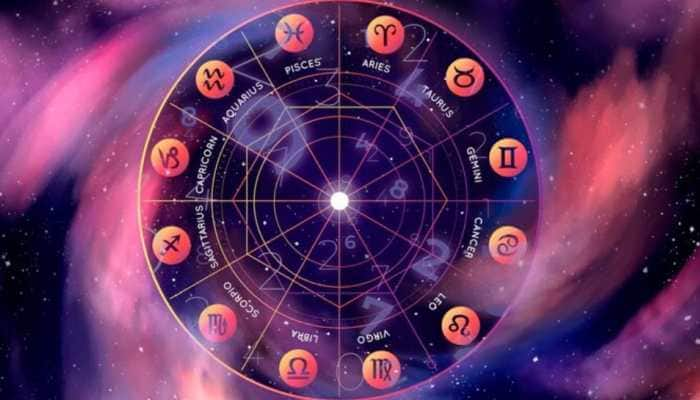Chandrayaan-3 BIG Update: Another Instrument On Pragyan Rover Confirms Presence Of Sulphur On Moon, ISRO Shares New Video
Chandrayaan-3 Latest Update: ISRO shared that in-situ Scientific Experiments conducted by another instrument onboard the Rover has confirmed the presence of Sulphur on the Lunar surface.
Trending Photos
)
NEW DELHI: In a significant update, the Indian Space Research Organisation (ISRO) on Thursday said that another cutting-edge tool installed on the Pragyan rover of Chandrayaan-3 has definitively identified the presence of sulphur on the Moon, utilizing an innovative analytical method.
Confirming the findings on micro-blogging platform X, ISRO unveiled that the Alpha Particle X-ray Spectroscope (APXS) has not only detected sulphur but has also unveiled the presence of various other trace elements.
Chandrayaan-3 Mission:
In-situ Scientific Experiments
Another instrument onboard the Rover confirms the presence of Sulphur (S) in the region, through another technique.
The Alpha Particle X-ray Spectroscope (APXS) has detected S, as well as other minor elements.
This… pic.twitter.com/lkZtz7IVSY — ISRO (@isro) August 31, 2023
ISRO's official tweet reads, "In-situ Scientific Experiments Another instrument onboard the Rover confirms the presence of Sulphur (S) in the region, through another technique. The Alpha Particle X-ray Spectroscope (APXS) has detected S, as well as other minor elements. This finding by Ch-3 compels scientists to develop fresh explanations for the source of Sulphur (S) in the area: intrinsic? volcanic?, meteoritic?......?. The video shows an automated hinge mechanism rotating the 18 cm tall APXS, aligning the detector head to be approximately 5 cm in proximity to the lunar surface. PRL, Ahmedabad has developed APXS with support from PRL, Ahmedabad. URSC, Bengaluru has developed the deployment mechanism.
Chandrayaan-3 Mission:
In-situ scientific experiments continue .....
Laser-Induced Breakdown Spectroscope (LIBS) instrument onboard the Rover unambiguously confirms the presence of Sulphur (S) in the lunar surface near the south pole, through first-ever in-situ measurements.… pic.twitter.com/vDQmByWcSL — ISRO (@isro) August 29, 2023
ISRO also released an informative video demonstrating the operational agility of the APXS. The footage showcases the automated hinge mechanism meticulously orienting the 18-cm tall instrument to position its detector head within approximately 5 cm of the lunar surface.
Pragyan Rover Captures Mesmerizing Snapshot of Vikram Lander
The Pragyan rover astounded space enthusiasts by capturing a captivating photograph of the Vikram lander against the backdrop of the Moon's topography. The Indian space agency unveiled two enchanting photographs, skillfully taken by the rover, which has been meticulously conducting a series of experiments on the lunar terrain ever since its successful touchdown on August 23. The alluring snapshot was skillfully captured by the Navigation Camera housed within the Rover (NavCam), ISRO noted.
Chandrayaan-3 Mission:
Smile, please!
Pragyan Rover clicked an image of Vikram Lander this morning.
The 'image of the mission' was taken by the Navigation Camera onboard the Rover (NavCam).
NavCams for the Chandrayaan-3 Mission are developed by the Laboratory for… pic.twitter.com/Oece2bi6zE — ISRO (@isro) August 30, 2023
Marking an impressive stride, ISRO has already disclosed two groundbreaking revelations about the uncharted South Pole of the Moon. This past Sunday, the agency shared its inaugural revelation about the lunar surface's temperature, which surprisingly exceeded the projections of numerous scientists. Additionally, an astonishing temperature variance spanning from -10 degrees to 50 degrees Celsius has been detected on the lunar landscape, a phenomenon unforeseen until now.
Astonishingly, just this Tuesday, ISRO divulged that the rover had successfully identified traces of sulphur at the South Pole and a dedicated quest for hydrogen's presence was officially initiated.
ISRO's preliminary analysis has unveiled the existence of several elements on the lunar expanse, including Aluminum (Al), Sulphur (S), Calcium (Ca), Iron (Fe), Chromium (Cr), and Titanium (Ti). The agency emphasized that further meticulous measurements have exposed the presence of manganese (Mn), silicon (Si), and oxygen (O). The pursuit of comprehending hydrogen's role is now fervently underway.
In the course of its meticulous experiments, the Pragyan Rover encountered its inaugural challenge on Monday as it identified a 4-meter diameter crater situated merely 3 meters ahead of its trajectory. Swift action was taken by ISRO's command centre, which adroitly rerouted the rover onto a safer path.
Nilesh Desai, the Director of ISRO's Space Applications Centre, conveyed on Tuesday that the agency is racing against time to optimize its experiments on the lunar landscape. With the deadline set for September 3, ISRO is making dedicated efforts to maximize its research endeavours. Chandrayaan-3, which softly touched down on August 23, aspired to conduct its scientific pursuits for a span of one lunar day, equivalent to 14 Earth days.
Ever since the inception of Chandrayaan-3's journey from the Satish Dhawan Space Centre in Sriharikota, ISRO has been consistently updating the world with remarkable strides in its lunar exploration mission.
India achieved a monumental leap as Chandrayaan-3, orchestrated by ISRO, made a triumphant touchdown on the lunar south pole on August 23. This triumph marked a historic milestone, making India the pioneering nation to accomplish this feat. This achievement also put to rest the previous disappointment stemming from the Chandrayaan-2's crash landing on the Moon's surface four years prior.
Live Tv







)
)
)
)
)
)
)
)
)
)
